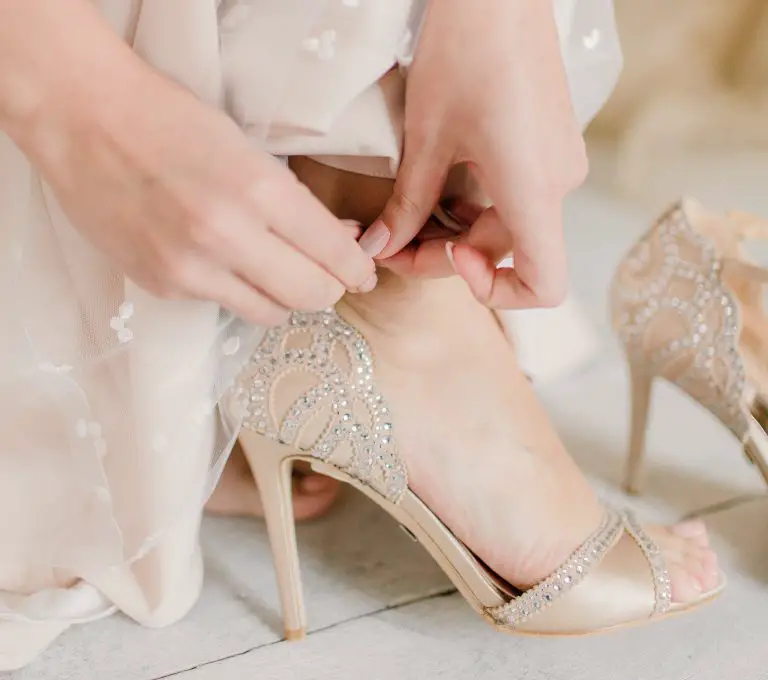How Tight Running Shoes Should Be? Expert Advice
When it comes to choosing the perfect pair of running shoes, finding the right fit is crucial for optimal performance and comfort. One important aspect to consider is how tight the running shoes should be. While it may be tempting to opt for a looser fit, it is generally recommended that running shoes should have a snug and secure fit. This is because a tight fit helps to minimize excessive movement of the foot within the shoe, reducing the risk of blisters, discomfort, and potential injuries. In this blog post, we will explore the reasons why tight running shoes are beneficial and provide insights on how to determine the ideal level of tightness for your running shoes.
Proper toe fit: You want a thumb’s width of space between your toe and the end of the shoe.
Midfoot and heel fit: You should have a snug (but not tight) fit at the midfoot and heel.
How Should Running Shoes Fit?

Running shoes should fit snugly but not too tight. There should be enough room in the toe box for your toes to wiggle comfortably, and the shoe should provide a secure and supportive fit throughout the midfoot and heel. It’s important to try on different sizes and styles, and walk or jog around to ensure the shoes feel comfortable and stable.
Tips for Getting a Great Running Shoe Fit
Here are some tips to help you get a great running shoe fit:
If The Shoe Doesn’t Fit
If the shoe doesn’t fit properly, it’s important to address the issue to avoid discomfort and potential injuries. Here are some steps you can take:
How Tight Should Running Shoes Be?
Running shoes should have a snug fit, but not be overly tight. They should provide a secure and supportive feel without causing discomfort or restricting blood circulation. It’s important to have enough room in the toe box for your toes to wiggle comfortably. While also ensuring a secure fit around the midfoot and heel to prevent excessive movement. Finding the right balance of snugness will vary depending on individual preferences and foot shape. So it’s recommended to try on different sizes and styles to find the perfect fit for you.
How Tight Should The Toe Box Be?
The toe box of running shoes should have enough room to allow your toes to move and wiggle comfortably. It should not feel tight or cramped. Ideally, there should be about a thumb’s width of space between your longest toe (usually the big toe) and the front of the shoe. This allows for natural toe splay and helps prevent discomfort, blisters, and other foot issues that can arise from a tight toe box. It’s important to find a balance between a snug fit and adequate space in the toe box to ensure optimal comfort and performance during your runs.
How Tight Should The Width Be?
The width of running shoes should provide a snug and secure fit without feeling too tight or constricting. The shoes should comfortably cradle the sides of your feet, providing support and stability. It’s important to avoid shoes that are too narrow, as they can cause discomfort, pinching, and potential foot issues. On the other hand, shoes that are too wide may lead to excessive movement and lack of stability.
Finding the right width will depend on your individual foot shape and preferences. It’s recommended to try on different sizes and widths to find the best fit that allows for a secure and comfortable feel throughout the midfoot area.
How Tight Should The Heel Cup Be?
The heel cup of running shoes should fit snugly around your heel to provide stability and prevent excessive movement. It should hold your heel securely in place without causing discomfort or rubbing. A properly fitting heel cup should feel snug, but not overly tight or restrictive. It should allow for a little bit of movement, such as a slight up and down motion. But should not allow your heel to slip or slide inside the shoe. A secure and well-fitting heel cup is important for preventing blisters, reducing the risk of injuries, and ensuring a comfortable and stable running experience.
Running Shoe Length and Width Size Charts
Measure the length and width of your feet using the tips in the video above. Then consult with the following size charts to find your perfect fit.
Women’s Running Shoe Length Size Chart

Men’s Running Shoe Length Size Chart

Women’s Running Shoe Width Size Chart

Men’s Running Shoe Width Size Chart

Conclusion
The tightness of running shoes plays a crucial role in ensuring a comfortable and injury-free running experience. While it is important to find a balance between a snug fit and allowing room for natural foot movement, erring on the side of a tighter fit is generally recommended. Tight running shoes provide better stability, reduce the risk of blisters and discomfort, and enhance overall performance. However, it is essential to remember that everyone’s feet are unique, and what may be considered a comfortable fit for one person may not be the same for another.
Therefore, it is advisable to try on different sizes and styles, consult with experts. And listen to your body to find the perfect level of tightness that works best for you. By prioritizing the right fit, you can maximize your running potential and enjoy a more enjoyable and injury-free running experience.










